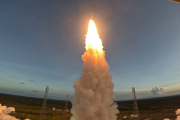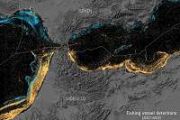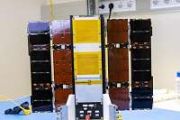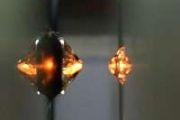
Copernical Team
US spaceship lost over S. Pacific following failed Moon mission
 A crippled American spaceship has been lost over a remote region of the South Pacific, probably burning up in the atmosphere in a fiery end to its failed mission to land on the Moon.
Astrobotic's Peregrine lander was launched on January 8 under an experimental new partnership between NASA and private industry intended to reduce costs for American taxpayers and seed a lunar economy.
But
A crippled American spaceship has been lost over a remote region of the South Pacific, probably burning up in the atmosphere in a fiery end to its failed mission to land on the Moon.
Astrobotic's Peregrine lander was launched on January 8 under an experimental new partnership between NASA and private industry intended to reduce costs for American taxpayers and seed a lunar economy.
But Axiom launches third mission to ISS, carrying European space hopes
 An all-European crew including Turkey's first astronaut launched for the International Space Station on Thursday with Axiom Space, as countries increasingly look to the private sector to fulfill their ambitions in the cosmos.
A SpaceX Crew Dragon fixed to the top of a Falcon 9 rocket blasted off Kennedy Space Center in Florida at 4:49 pm local time (2149 GMT), and should reach its destinatio
An all-European crew including Turkey's first astronaut launched for the International Space Station on Thursday with Axiom Space, as countries increasingly look to the private sector to fulfill their ambitions in the cosmos.
A SpaceX Crew Dragon fixed to the top of a Falcon 9 rocket blasted off Kennedy Space Center in Florida at 4:49 pm local time (2149 GMT), and should reach its destinatio AST SpaceMobile Launches $100 Million Stock Offering Amid Strategic Tech Investments
 AST SpaceMobile, Inc. (NASDAQ: ASTS), a pioneering company in space-based cellular broadband technology, has recently made two significant announcements that mark a substantial leap in its quest to deliver global connectivity. The company has launched a public offering of $100 million of its Class A common stock and secured a strategic investment from industry giants AT&T, Google, and Vodafone.
AST SpaceMobile, Inc. (NASDAQ: ASTS), a pioneering company in space-based cellular broadband technology, has recently made two significant announcements that mark a substantial leap in its quest to deliver global connectivity. The company has launched a public offering of $100 million of its Class A common stock and secured a strategic investment from industry giants AT&T, Google, and Vodafone. Japan 'Moon Sniper' lands but 'not generating power'
 Japan on Saturday became only the fifth nation to achieve a soft Moon landing, but the craft's long-term fate was in doubt after space agency officials said its solar cells were not generating power.
With the Smart Lander for Investigating Moon (SLIM), Japan followed the United States, the Soviet Union, China and India in landing on the lunar surface.
After initial uncertainty, space
Japan on Saturday became only the fifth nation to achieve a soft Moon landing, but the craft's long-term fate was in doubt after space agency officials said its solar cells were not generating power.
With the Smart Lander for Investigating Moon (SLIM), Japan followed the United States, the Soviet Union, China and India in landing on the lunar surface.
After initial uncertainty, space First Europeans take off on commercial flight to Space Station
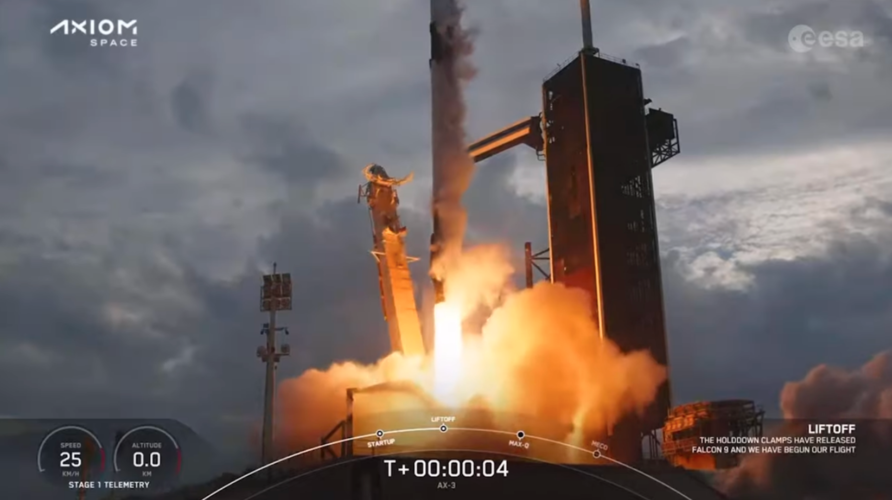
ESA project astronaut Marcus Wandt from Sweden blasted into space tonight from NASA’s Kennedy Space Center in Florida, USA, at 21:49 GMT (22:49 CET, 16:49 local time). A SpaceX Falcon 9 rocket launched the Axiom Mission 3 (Ax-3) crew of four astronauts from launch pad 39A.
Muninn spreads its wings
 Video:
00:10:19
Video:
00:10:19
ESA project astronaut Marcus Wandt launched together with the rest of the Axiom-3 crew at 22:49 CET on 18 January 2024, from launch pad 39A, NASA's Kennedy Space Center, Florida, USA.
Marcus will start his Muninn mission when he enters the International Space Station on Saturday 20 January, where he will spend up to 14 days conducting science and testing technology that can one day help people on Earth.
You can follow Marcus mission on his social media:
https://twitter.com/astro_marcus
https://www.instagram.com/esaastro_marcus/
And learn more about his Muninn mission on ESA Muninn page:
https://www.esa.int/Science_Exploration/Human_and_Robotic_Exploration/muninn
Earth from Space: Columbia Glacier, Alaska
 Image:
The Copernicus Sentinel-2 mission takes us over Alaska’s Columbia Glacier, one of the fastest changing glaciers in the world.
Image:
The Copernicus Sentinel-2 mission takes us over Alaska’s Columbia Glacier, one of the fastest changing glaciers in the world. Week in images: 15-19 January 2024

Week in images: 15-19 January 2024
Discover our week through the lens
Lockheed Martin secures $890M SDA contract for advanced missile tracking satellites
 The Space Development Agency (SDA) has taken a significant step in enhancing national defense capabilities by awarding Lockheed Martin (NYSE: LMT), a renowned leader in aerospace and defense technology, a substantial contract valued at $890 million. This agreement marks a pivotal moment in the advancement of the Tranche 2 (T2) Tracking Layer satellite constellation, designed to bolster missile t
The Space Development Agency (SDA) has taken a significant step in enhancing national defense capabilities by awarding Lockheed Martin (NYSE: LMT), a renowned leader in aerospace and defense technology, a substantial contract valued at $890 million. This agreement marks a pivotal moment in the advancement of the Tranche 2 (T2) Tracking Layer satellite constellation, designed to bolster missile t 


